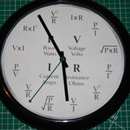Introduction: PIR and Radar Sensor Comparison
I have been a bit of a fan of PIR sensors for some years now, for outside lighting, shed protection, and general movement sensing for intruder alarms.
A little while ago I came across a Radar sensor which was actually cheaper than my regular PIR ones, so I just had to try them out.
In this Instructable, I will give the basic information for both sensors, a 'how to' on wiring them up with an Arduino, and my list of Pros and Cons.
Step 1: The Sensors
The radar sensor: RCWL-0516
- The RCWL-0516 is a radar microwave motion sensor module.
- Working voltage: 4 - 28V.
- It provides a convenient 3.3V output at 100mA to drive a MCU or an LED (always on).
- Supply current >3mA (2.8mA typical)
- Operating frequency: 3.2GHz
- Transmit power 20mW (typical) to 30mW (max)
- Sensing angle: 360 degrees.
- Fairly short-range 5 meters (ish)
- Size 39mm x 17mm x2.6mm
- Internal timer with non movement is about 2 seconds.
It is NOT radar as an object detection system where the range, angle, and velocity can be determined. It detects reflections or interference.
- Pin Function
- 3V3 100 mA voltage regulated (3.3v) external output (LED?)
- GND Ground
- OUT Trigger: high (3.3V) if motion detected. 0V normally. Digital only
- VIN 4 - 28v supply voltage
- CDS Sensor disable input (pull low to disable the sensor)
HC-SR501 Passive Infra Red sensor
- Operating voltage of 5v to 12v although some state 28v
- Static current usage of <50uA
- Output is 3.3v high and a 0v low
- The delay time can be adjusted from 2 to 240 seconds
- Sensing range can be adjusted from 3 meters to 7 meters (ish)
- Sensing angle: <100 degree angle
- Size 33mm x 24mm x 24mm
- Pin Function
- VCC 5v - 12v supply
- GND Ground 0v
- OUT Sensor trigger
Step 2: Putting It Together on a Breadboard
Parts list:
- Arduino UNO
- 1 X RCWL-0516 Radar sensor
- 1 X HC-SR501 Passive Infra Red sensor
- 2 X LEDs
- 2 X 330ohm resistors
- Breadboard
- Jumper leads
Because the PIR has male pins and male pins also require soldering to the radar, you will need need some male to female jumper leads, (6) or some creative wiring.
Wiring it up
Radar:
- Vin to Arduino 5v
- GND to Arduino GND
- OUT to Arduino pin 7
PIR:
- VCC to Arduino 5v
- GND to Arduino GND
- OUT to Arduino pin 3
LEDs:
- Radar, Arduino pin 4 through 330ohm resistor to Arduino GND
- PIR, Arduino pin 2 through 330ohm resistor to Arduino GND
Step 3: Pros and Cons:
PIR
Pros Cons
- The PIR has adjustable sensitivity Time is the same regardless of movement
- The PIR has adjustable time on. Blind behind the sensor
- Outputs digital signal Outputs digital signal
- Sensitivity very good at 2 metres Requires lens
- Reasonable size but bulky Not breadboard friendly
- Easy to use with any microcontroller
- Low cost 0.58 GBP or 0.76 USD
Radar
Pros Cons
- Time resets with new movement No sensitivity adjustment
- Sensor has good 360 degree visibility Remains on for a pre-determined amount of time
- Time resets with new movement Outputs digital signal
- Outputs digital signal
- Sensitivity very good at 2 metres
- Small and flat
- Easy to use with any micro controller
- No extra lens required
- Low cost 0.37 GBP or 0.49 USD
- Breadboard friendly
Step 4: In Summary
All in all, both sensors are very good and at a reasonable distance.
It is a shame that neither output an analog signal, but apart from that, I think that they are both really good value for money.
So, 10 out of 10 for both sensors.
I have not used the radar sensor as yet but I am sure that I will in the future, but I will also carry on using the good old PIR sensor.











![Tim's Mechanical Spider Leg [LU9685-20CU]](https://content.instructables.com/FFB/5R4I/LVKZ6G6R/FFB5R4ILVKZ6G6R.png?auto=webp&crop=1.2%3A1&frame=1&width=306)


